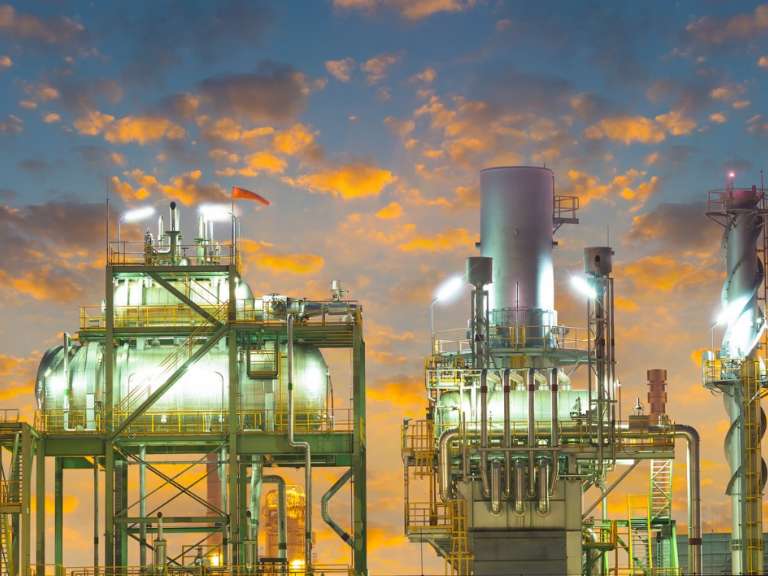A Proactive Maintenance Plan for HRSG Servicing
David AppleyardImplementing a proactive maintenance plan for HRSGs offers asset managers the opportunity to reduce risk and improve reliability and availability.

In today's digital age, adopting a proactive maintenance plan for heat recovery steam generators (HRSGs) is not only possible, but can also yield tangible performance benefits and economic advantages for plant owners and asset managers. Analysis of sensor data now enables owners to apply a new and more effective approach to servicing HRSGs. Unlike other key assets, such as gas turbines, HRSGs are typically only serviced or repaired when an availability issue emerges or during an annual inspection and cleaning program. This can leave HRSGs in suboptimal condition for long periods of time or result in unnecessary or poorly timed maintenance activities. Neither situation is beneficial. A proactive maintenance plan, on the other hand, ensures high performance throughout the plant's primary asset chain and reduces operational costs.
Reduce Risk by Changing Your Mindset
A switch to proactive or risk-based maintenance marks a major departure from the mindset of many plant managers today. However, by adopting a proactive maintenance plan for HRSGs, plant managers can both reduce risk and improve reliability and availability. A shift from reactive to proactive servicing of HRSGs is also a good idea when adding an HRSG to a multi-year service agreement (MYA), as risk is transferred away from the asset owner to the service provider. Under an MYA, which is typically a fixed-price arrangement and may include a reliability guarantee, reducing outages and enhancing performance naturally benefits the asset owner. However, it also forces a change in approach by the service provider toward a more proactive mindset. This approach is made possible by the digital transformation of the power industry and adoption of data analytics.
Indeed, the benefits of a proactive maintenance strategy for some classes of assets are already well-established, particularly for mission-critical equipment. The HRSG acts as the vital link between the gas turbine and the steam turbine, and it plays a principal role in overall plant performance for combined cycle units. As such, the importance of an effective and timely HRSG maintenance strategy cannot be overstated. Asset managers should therefore consider the contribution HRSGs make to overall plant performance when determining whether to switch to a proactive and risk-based maintenance strategy.
Improve Reliability by Addressing HRSG Servicing Issues
HRSGs can be affected by both short- and long-term maintenance issues. For instance, erosion, corrosion, and fouling can have a major impact on the serviceability and efficiency of the boiler tube bundles within the HRSG. On the flue gas side, deposits of ammonium bisulphate from emissions control equipment and iron oxide can lead to tube fouling, reducing heat transfer efficiency and rapidly increasing back pressure through the gas turbine. This affects the efficiency of both the HRSG and the turbine, slicing MW off the turbine's output and potentially increasing operating costs. Meanwhile, some HRSG designs can present other longer-term challenges for operators, such as thermal fatigue and creep. This issue is becoming more significant, as cycling such plants is a growing trend. Today, it is possible to monitor an HRSG unit and apply analytics to the data in a manner that improves customer outcomes. For example, monitoring pressure part damage accumulation due to creep and fatigue can lead to improved maintenance planning around HRSG components, such as the HP superheaters, reheaters, and drum. These digital capabilities can enhance maintenance programs and save operators significant costs.
Digital Analytics and Interpretation for Long-Term Performance
While good design can extend the longevity of boiler components, effective maintenance also plays a major role in ensuring high performance and reliability by addressing issues before they impact availability and thermal efficiency. Given the importance of the HRSG to overall plant performance, a digitally enabled proactive maintenance plan for the HRSG is therefore central to plantwide performance. For example, degradation of HRSG components is inevitable in such a challenging environment, but sophisticated monitoring of the asset allows repair programs to be implemented before this degradation affects the boiler's availability. Examination of the hot gas path, the steam drum, and elements like the tube harp bundles can reveal gas-side tube fouling on heat transfer sections downstream of the selective catalytic reduction (SCR) equipment due to oxidation and accumulation of debris. Cleaning an HRSG is, of course, costly and requires shutdown. However, the power of analytics means remedial actions such as CO2 blasting or a pressure wave approach can be executed in a timely and conveniently scheduled manner. This ultimately reduces commercial risks and saves operational expenditure. A long-term proactive approach also suggests that, at the end of a decade-long MYA, the asset is in better condition than it otherwise would be.
When weighing the costs and benefits of switching from scheduled to proactive maintenance for HRSGs, asset managers should consider shifting how they think about this vital element of a combined cycle power plant. The emergence of digital plant technologies and analytics has already enabled an increasing number of plants to apply proactive maintenance plans to other major power plant components. An analytics-based approach is now possible for HRSGs, too. Including the HRSG in this kind of long-term proactive strategy under an MYA offers an opportunity for sustainable performance along the entire value chain and ultimately reduces commercial risk.
Flexibility and efficiency are the watchwords of every asset manager operating in today's evolving energy market.
Learning how to implement ISO 55000 helps asset managers develop a holistic view of power plant performance.
Power plant management challenges can keep you from getting a restful night, unless you know how to tackle them.